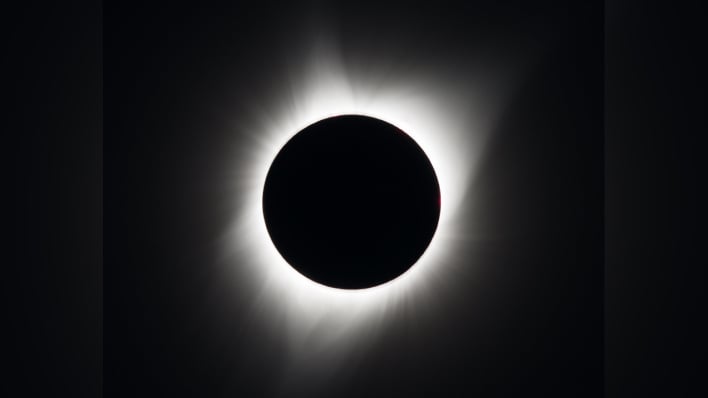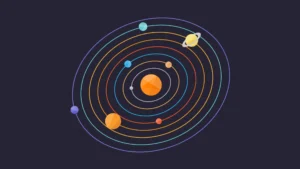On April 8, 2024, parts of North America will be plunged into darkness for the longest total solar eclipse to hit our continent in around 100 years. A total eclipse itself is only possible by sheer cosmic coincidence – with the Sun’s diameter being 400 times larger than the Moon’s and the Sun being almost 400 times farther away from us than the Moon. While total solar eclipses aren’t particularly rare – they happen somewhere on Earth around every 18 months – they often happen over oceans or less populated areas. An estimated 31.5 million people live inside the path of totality versus 12 million from the one North America experienced in 2017.
An eclipse occurs when a New Moon near or at its closest to Earth (known as “perigee”) lines up between the Sun and Earth. During an eclipse, you can see the Sun’s corona (or outer atmosphere) glow faintly, silhouetting the Moon. And, unlike the total solar eclipse in 2017, which occurred during a solar minimum, 2024’s will be at a solar maximum, meaning the corona is more likely to be visible in more furious fashion (kind of like a “tangled hairball”.)
Just before totality, 10-15 seconds before the Moon completely eclipses the Sun, you can see what is known as the “Diamond Ring” glimmer briefly (seen in the image below), as well as “Baily’s Beads” 5 seconds before, which are created by sunlight passing through mountains and valleys on the Moon.
If you’re in any of these destinations in the graphic below – you’re in luck! Your town is in the path of totality. But, weather is also a challenging variable, with your best chances of clear skies being in Southern regions of the United States or Mexico. The more centered you are in the path of totality, the longer the eclipse will last – up to 4 min 28 seconds. If you’re on the fringes, the total eclipse will be much shorter. For example, Montreal will only experience totality for 1 minute 27 seconds. You can look at some key Canadian totality locations on the CSA’s website here. For those outside of totality, you will experience a partial eclipse with some portion of the Sun eclipsed by the Moon. Here in Vancouver, we will experience a 17% partial eclipse maximum at 11:30am PT.
Most importantly, be sure to get eclipse glasses to view this event, as the Sun can permanently damage your eyes. Plus, don’t you want to look this cool?

The next total eclipse to hit Canada/USA will be on August 23, 2044, so unless you plan on travelling further afield, this might be the best chance you have in 20 years to experience one! Or, you could travel to any of the ones here.
For more about the upcoming total eclipse, visit NASA’s Eclipse page.



